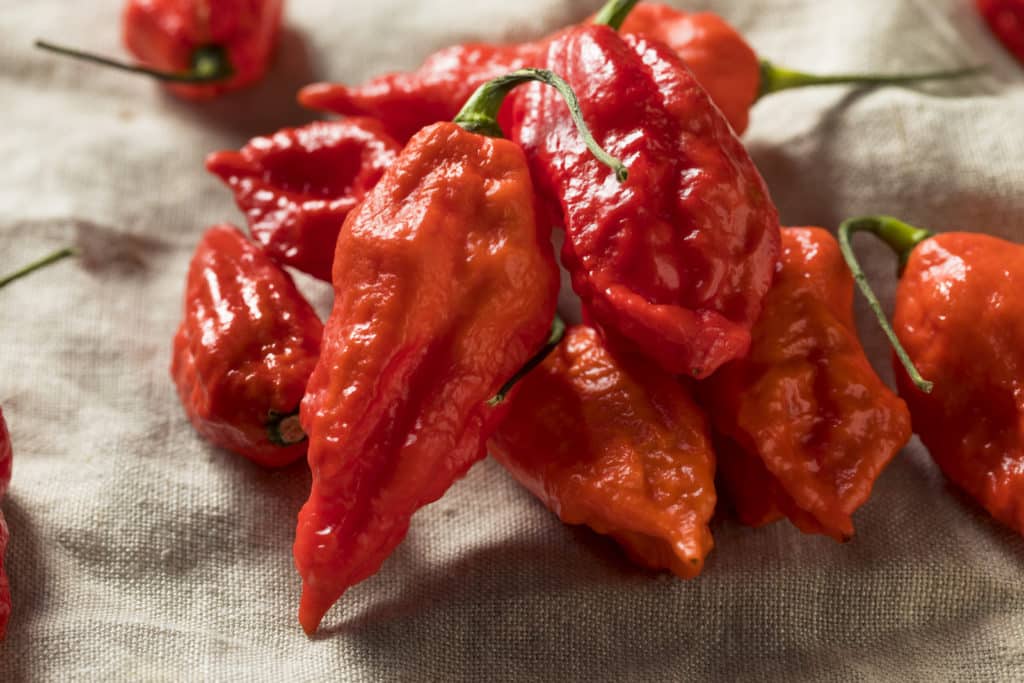

“I’ve been saying that super-hot peppers are different for ten years,” said Ed Currie of the South Carolina based Pucker Butt Pepper Company. Stated plainly, super-hot peppers don't just have more capsaicin than chiller peppers they store it differently. In super-hot peppers, roughly half their capsaicin is stored in the skin. But if you remove the veins and seed capsule from a ghost pepper, you reduce the amount of capsaicin by only 50 percent. In a jalapeno, if you remove the seed capsule, you slash the amount of capsaicin by roughly 100 percent-essentially all of the heat is in the placenta. Super-hot peppers don’t just have more capsaicin than chiller peppers they store it differently.īosland and Cooke found that super-hot chili peppers-fruits that top one million on the Scoville scale-store as much heat in their fleshy skins as they do in the pith. They published their research in late 2015 in the Journal of the American Society for Horticultural Science. By giving the peppers the blacklight treatment, the researchers were able to show that though many varieties store the bulk of their heat in the center pith, some peppers work differently. It turns out that capsaicin, the compound that gives chili peppers their fire, is well suited to fluorescence microscopy: Under the right conditions (think blacklights), it naturally glows in the dark. Bosland took the peppers to Peter Cooke, who runs the electron microscope lab at New Mexico State University, to image it. The glistening made them think that perhaps the veins weren’t just along the interior placenta, but lining the inside wall of the fruit itself. It just doesn't pop out at you like it does on the white placenta tissue,” said Bosland.
GHOST PEPPER SKIN
“Because the skin of the fruit is kind of a red-orange color, it’s sometimes hard to see that yellow vesicle. One day last fall, Bosland and his colleagues were in the field cutting some ghost peppers when they noticed that the peppers walls were glistening in the sunlight. It wasn’t until recently that researchers really understood the source of the ghost’s heat. (Pepper heat is measured in Scovilles, a unit based on the number of heat-producing alkaloids a pepper contains.) But in 2007, Guinness World Records certified the ghost pepper as the world’s hottest chile pepper-some 400 times hotter than Tabasco sauce. In 2007, Guinness World Records certified the ghost pepper as the world’s hottest chile pepper-some 400 times hotter than Tabasco sauce.įor example, the ghost pepper, which doesn’t have many veins or appear particularly yellow, shouldn’t pack such a punch. “If you go to the grocery store, and, say, pick six jalapenos up, and cut them open and look at those veins, the more yellow you see, the hotter the jalapeno,” said Paul Bosland, a professor of horticulture and director of the Chile Pepper Institute at New Mexico State University.Įven when all those pieces are removed, though, some peppers-de-veined, de-seeded, and not yellow-still have a heat that just won’t chill, befuddling casual cooks and researchers alike. Because capsaicin, the substance that makes chilis hot, is a yellowish liquid in its pure form, yellow veins often indicate more spice. Removing the seeds, then, usually results in removing the placenta and veins, thus cooling the fruit’s heat.Īnother trick: Sometimes it’s possible to determine the heat of a pepper just by looking. The reason why it often works: Conventional wisdom holds that a pepper’s power is concentrated in the placenta-the central core of the fruit that contains the seeds, otherwise known as the pith-and the thick veins that attach the placenta to the pepper wall. Most home cooks know that the trick for tempering the heat of a chili pepper is to remove the seeds.


 0 kommentar(er)
0 kommentar(er)
